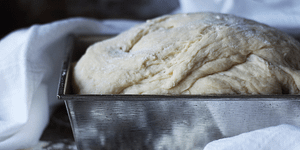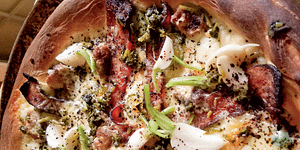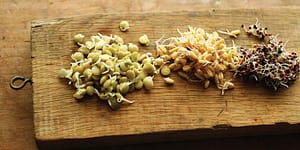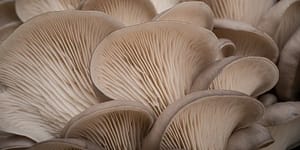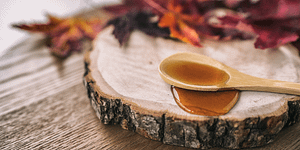Ramp It Up A Notch: Tabasco-Style Ramp Hot Sauce

Looking for a delicious (and spicy) DIY project to work on this spring? This recipe for foraged, tabasco-style ramp hot sauce is sure to turn up the heat.
The following is an excerpt from The Forager Chef’s Book of Flora by Alan Bergo. It has been adapted for the web.
Unless otherwise noted, all photographs copyright © 2021 by Alan Bergo.
 Preserving & Cooking Dried Ramp Leaves
Preserving & Cooking Dried Ramp Leaves
One of my favorite ways to preserve ramp leaves is to dehydrate them, then crumble them before adding to recipes.
Dried ramp leaves lend a telltale aroma to foods but are milder in flavor than either onion or garlic powder, so you can use more of them in your cooking.
They also make a good base ingredient for rubs and seasonings.
Drying Ramp Leaves
To dry them, put clean leaves in a dehydrator, making sure to use high heat (145°F/60°C or higher) until the leaves are cracker-dry.
Drying at lower temperatures can yield chewy, soft leaves—still delicious, just chewy and difficult to grind to a fine powder.
Once dehydrated, store the leaves in an airtight bag or jar, and crumble as needed. For a fine powder for making rubs, grind the dried leaves in a coffee grinder or high-speed blender.
RECIPE: Tabasco-Style Ramp Hot Sauce
Makes about 3 quarts (3 L)
The holy grail of ramp sauces in my world: a long-fermented hot sauce modeled after Tabasco. This makes 3 quarts (3 L), so consider making a half recipe if you don’t want a lot of hot sauce, or if it’s your first time making it.
That being said, once you taste this sauce on a plate of eggs, you might want to start doubling the recipe. It’s a great DIY project to start in the spring and enjoy in the cold months.
Ingredients
- 1 ounce (28 g) kosher salt
- 2 cups (480 ml) water
- 14 ounces (400 g) ramp leaves
- 2 pounds (910 g) jalapeño peppers, stemmed and chopped, seeds included, to yield about 13/4 pounds (795 g)
- 3 1/2 cups (850 ml) cider vinegar
- 1 1/2 teaspoons xanthan gum
Procedure
- Add the salt to the water, and whisk to dissolve. Chop the ramp leaves, combine with the jalapeños, and pack into a 3-quart (3 L) (or larger) container.
- Pour the salt water over the ramp mix, cover tightly, and store in a cool, dark place for 2 weeks, stirring every few days. After the fermentation stops, the mixture will be stable, and you won’t need to stir it (or “burp” it, as chefs say) regularly.
- Continue aging the mixture for at least 2 months, and up to 6.
- To finish the sauce, add the cider vinegar and purée 4 cups (945 ml) at a time (or less, if you have a small blender), adding 1/2 tea- spoon of xanthan gum to each 4-cup batch to thicken it slightly.
- Strain the sauce for the smoothest finished product, discarding the leftover solids.
- From here, the sauce can be canned and processed in a water bath, which I recommend if you’re giving it as a gift. It’s fine stored at room temperature, but will keep the brightest flavor if refrigerated after opening. It will keep indefinitely.
Recommended Reads
Recent Articles
Want to spice up your traditional bread recipes? This salt-rising bread recipe by fermentation expert Sandor Ellix Katz has all the simplicity, flavor, and uniqueness you’ve been searching for! The following is an excerpt from Sandor Katz’s Fermentation Journeys by Sandor Ellix Katz. It has been adapted for the web. What Is Salt-Rising Bread? Salt-rising…
Read MoreNothing says “spring” like a fresh, foraged meal! Savor the flavors of the season with this Milkweed Bud Pizza recipe.
Read MoreWhat’s so great about oyster mushrooms? First, you can add them to the list of foods that can be grown indoors! They are tasty, easy to grow, multiply fast, and they love a variety of substrates, making oyster mushrooms the premium choice. The following is an excerpt from Fresh Food from Small Spaces by R. J.…
Read More





